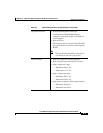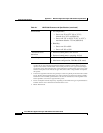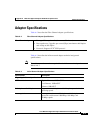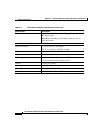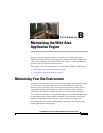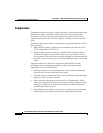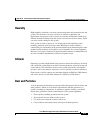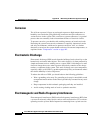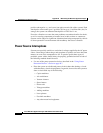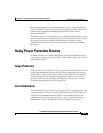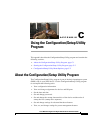
Appendix B Maintaining the Wide Area Application Engine
Maintaining Your Site Environment
B-2
Cisco Wide Area Application Engine 7326 Hardware Installation Guide
OL-6831-02
Temperature
Temperature extremes can cause a variety of problems, including premature aging
and failure of chips or mechanical failure of devices. Extreme temperature
fluctuations can cause chips to become loose in their sockets and can cause
expansion and contraction of disk drive platters, resulting in read or write data
errors.
To minimize the negative effects of temperature on system performance, follow
these guidelines:
• Ensure that the system is operated in an environment no colder than 32°F
(0° C) or hotter than 104°F (40° C).
• Ensure that the system has adequate ventilation. Do not place it within a
closed-in wall unit or on top of cloth, which can act as insulation. Do not
place it where it will receive direct sunlight, particularly in the afternoon. Do
not place it next to a heat source of any kind, including heating vents during
winter.
Adequate ventilation is particularly important at high altitudes. System
performance may not be optimum when the system is operating at high
temperatures as well as high altitudes.
• Make sure that all slots and openings on the system remain unobstructed,
especially the fan vent on the back of the system.
• Clean the system at regular intervals to avoid any buildup of dust and debris,
which can cause a system to overheat.
• If the system has been exposed to abnormally cold temperatures, allow a
2-hour warm-up period to bring it up to normal operating temperature before
turning it on. Failure to do so may cause damage to internal components,
particularly the hard disk drive.
• If intermittent system failures are noticed, try reseating any socketed chips,
which might have become loose because of temperature fluctuations.






